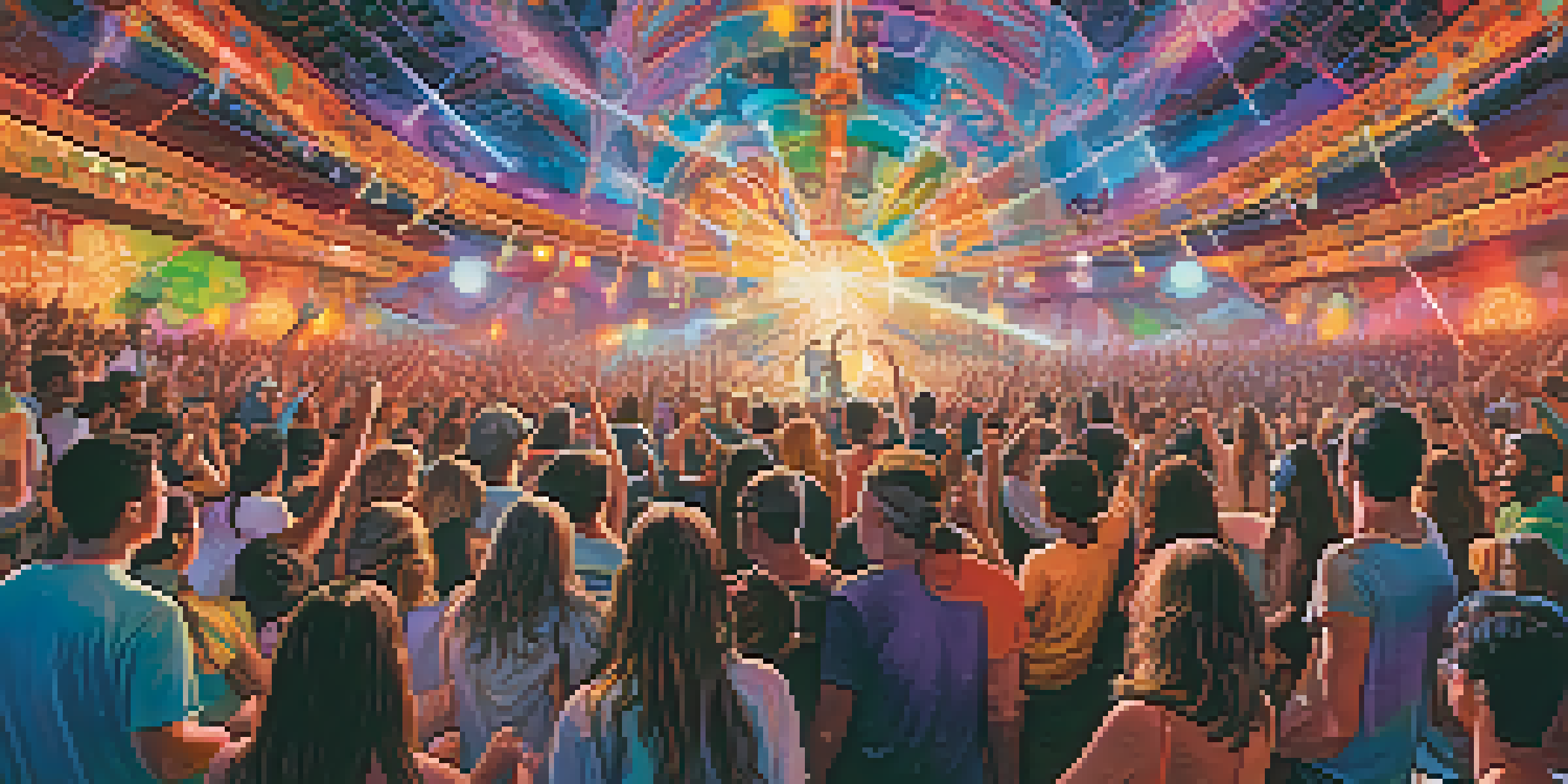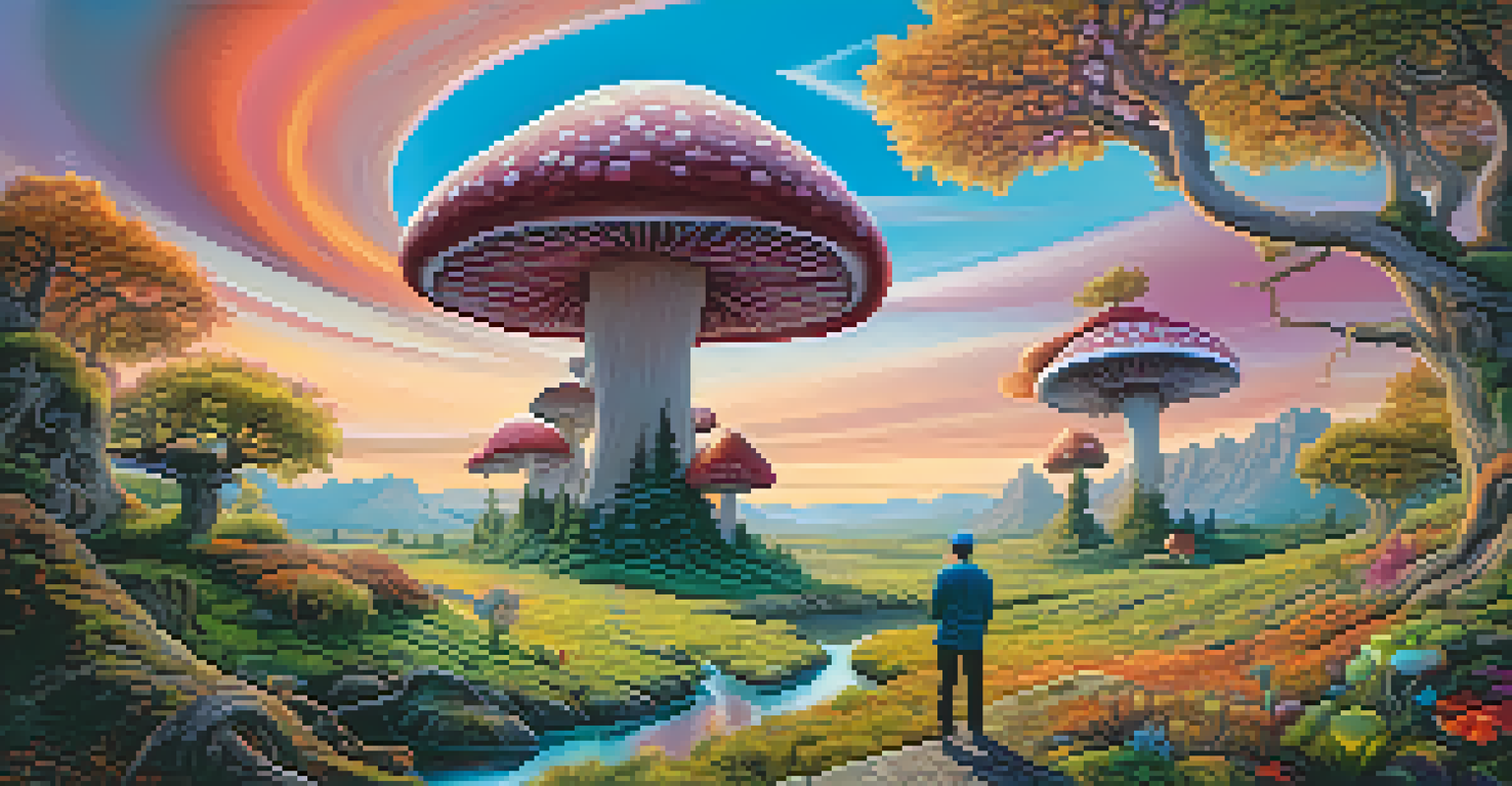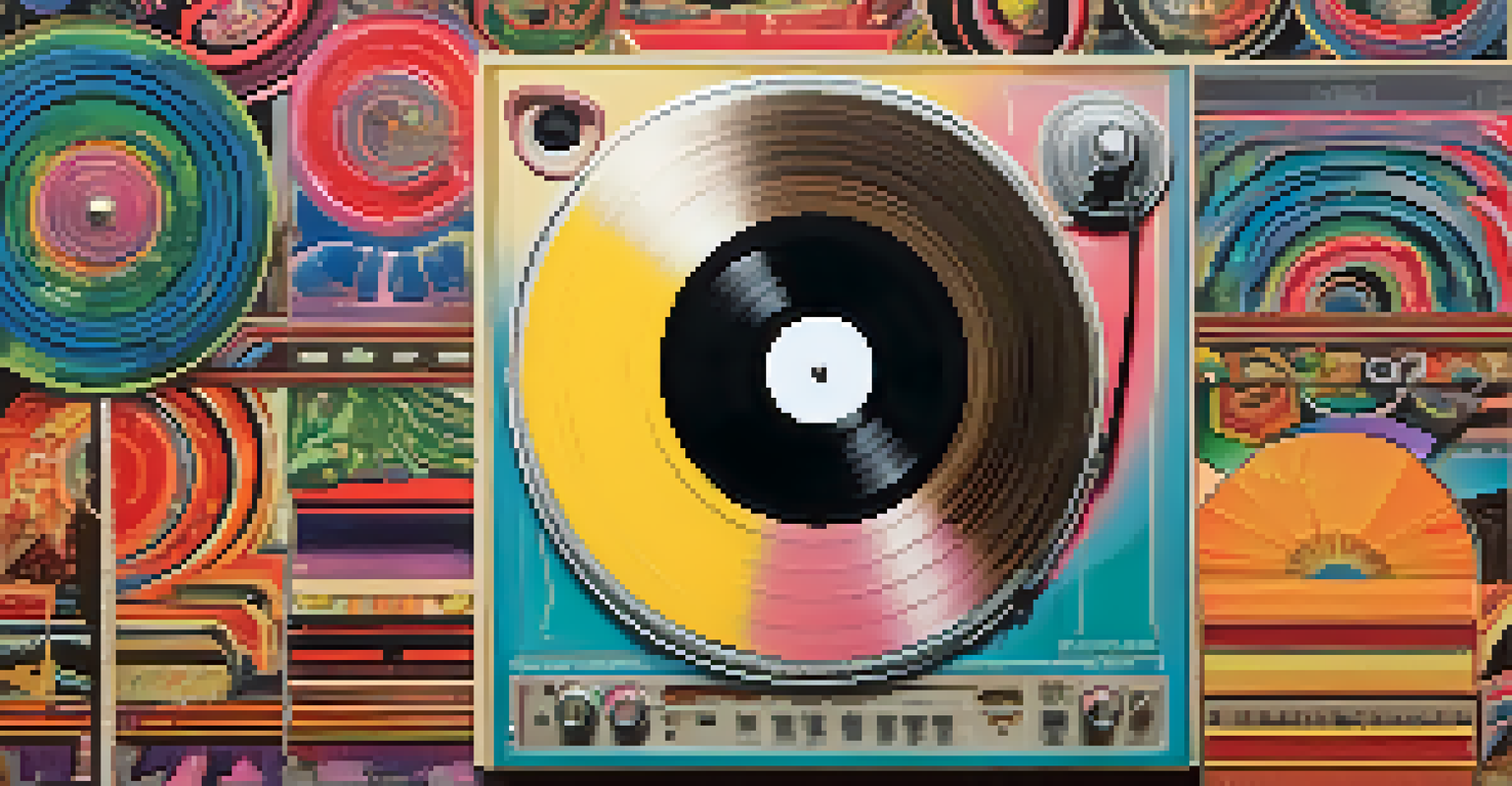Psychedelic Rock and Literature: A Cultural Symbiosis

Understanding Psychedelic Rock: Origins and Influence
Psychedelic rock emerged in the 1960s, deeply influenced by the counterculture movement. Artists like The Beatles and Pink Floyd pushed musical boundaries, creating soundscapes that mirrored the experiences of altered states of consciousness. The genre's experimental nature often drew from various cultural influences, including Eastern philosophy and avant-garde art.
The only thing I ever wanted to do was to make music that was psychedelic, that made you feel like you were in another universe.
This genre wasn’t just about music; it was a holistic experience that engaged all senses. The vibrant artwork on album covers and the immersive concerts created a multi-dimensional canvas. As listeners dove deep into these auditory experiences, many found parallels in contemporary literature, which also explored themes of consciousness and perception.
The fusion of psychedelic rock with literary exploration captured the zeitgeist of the era, reflecting societal shifts and personal journeys. Just as the music encouraged a break from traditional norms, literature began to embrace unconventional narratives and forms. This symbiosis marked a significant cultural evolution that still resonates today.
Literary Influences: Authors Shaping Psychedelic Rock
Several authors significantly influenced the psychedelic rock movement, with figures like Aldous Huxley and Jack Kerouac leading the charge. Huxley's 'The Doors of Perception,' which delved into the nature of human consciousness, inspired both the name and themes of the legendary band The Doors. Similarly, Kerouac’s spontaneous prose reflected the free-spirited ethos that characterized much of the music.

These writers explored themes of transcendence and self-discovery, echoing the sentiments found in the music. Their works often served as literary manifestos for a generation seeking deeper meanings beyond the mundane. The interplay between their narratives and the music created a rich tapestry of ideas that challenged listeners to rethink their perspectives.
Psychedelic Rock's Cultural Roots
Emerging in the 1960s, psychedelic rock was deeply intertwined with the counterculture movement, pushing musical boundaries and reflecting societal shifts.
As a result, the influence of these literary giants is evident in the lyrics and philosophies of many psychedelic rock bands. Their ability to weave complex ideas into relatable narratives enriched the music, making it not just entertainment but a form of cultural commentary. This literary connection continues to inspire new musicians and writers today.
Psychedelic Literature: Exploring Altered States
Just as psychedelic rock sought to explore the mind, psychedelic literature delves into altered states of consciousness. Authors like Philip K. Dick and Thomas Pynchon challenged reality, using their narratives to explore the surreal and the bizarre. Their works often mirrored the auditory experiments of psychedelic rock, creating a dialogue between the two forms of expression.
I think we’re all going to have to break free of the constraints of the past and explore new avenues of creativity.
These authors employed vivid imagery and unconventional structures, inviting readers to experience a journey rather than just a story. The boundary between reality and illusion blurred, much like the music that accompanied it. This literary approach encouraged readers to reflect on their perceptions and the nature of existence itself.
Psychedelic literature often serves as a companion to the music, enhancing the experience for those who choose to explore both. This symbiotic relationship allows for a deeper understanding of the human psyche, offering insights that resonate on multiple levels. As the genres continue to evolve, the exploration of consciousness remains a central theme.
The Role of Visual Art in Psychedelic Culture
Visual art played a crucial role in the development of psychedelic culture, with album covers and posters becoming iconic symbols of the era. Artists like Peter Max and Victor Moscoso created vibrant, kaleidoscopic imagery that captured the essence of the music. These visuals not only complemented the sound but also served as a form of artistic expression in their own right.
The interplay between visual art and music created a multi-sensory experience that engaged fans on various levels. Attending concerts became a holistic experience, where the music, visuals, and even communal vibes created a unique atmosphere. This synergy encouraged a deeper connection among audiences, fostering a sense of belonging and exploration.
Literature's Impact on Psychedelia
Authors like Aldous Huxley and Jack Kerouac significantly influenced the themes and narratives of psychedelic rock, enriching the genre's cultural commentary.
Today, the legacy of this visual art continues to influence modern design and music. The psychedelic aesthetic has found its way into contemporary culture, reminding us of the creative possibilities that arise when art forms intersect. This vibrant visual language remains a testament to the enduring impact of psychedelic culture.
Psychedelic Themes in Contemporary Literature
The influence of psychedelic rock can be seen in contemporary literature, where themes of exploration and consciousness remain prevalent. Authors like Haruki Murakami and Neil Gaiman often weave surreal elements into their narratives, inviting readers to question reality. This modern literary landscape reflects the same spirit of experimentation that defined the original psychedelic movement.
These writers embrace the complexity of the human experience, often blending fantasy with philosophical inquiries. Just as psychedelic rock sought to break free from conventional structures, so too do these authors challenge narrative norms. Their works encourage readers to embark on their own journeys of self-discovery and introspection.
The connection between psychedelic rock and modern literature illustrates the enduring power of these themes. As new generations of writers and musicians emerge, they build upon this rich legacy, continuing to explore the depths of consciousness and creativity. This cultural symbiosis remains a source of inspiration and engagement for all who dare to delve into it.
Cultural Impact: Psychedelia in Society
The cultural impact of psychedelic rock and literature extends far beyond their respective genres. They played a significant role in shaping societal attitudes towards mental health, spirituality, and self-exploration. The openness to exploring altered states of consciousness helped foster discussions about mental well-being and the importance of mindfulness.
This shift in perspective allowed for a greater appreciation of diverse experiences, encouraging individuals to embrace their unique journeys. As society became more receptive to these ideas, the lines between art, music, and philosophy began to blur. This cultural evolution laid the groundwork for contemporary movements focused on holistic living and personal growth.
Legacy of Psychedelia Today
The enduring influence of psychedelic rock and literature continues to shape contemporary culture, encouraging exploration of consciousness and creativity.
Today, the legacy of psychedelia continues to influence various aspects of culture, from art and music to wellness practices. The ongoing exploration of consciousness remains a vital part of the human experience, reminding us of the power of creativity and connection. As we navigate an increasingly complex world, the lessons from psychedelic rock and literature resonate more than ever.
The Future of Psychedelia: Evolving Connections
As we look to the future, the connection between psychedelic rock and literature is poised to evolve further. With the resurgence of interest in psychedelics for therapeutic purposes, new narratives are emerging that explore these themes in fresh ways. Writers and musicians are increasingly drawing from historical influences while also incorporating modern insights into their work.
This ongoing dialogue between the two forms of art allows for a richer exploration of consciousness and creativity. As new technologies and platforms emerge, the ways in which we experience and share these ideas will also transform. This evolution presents exciting opportunities for collaboration and innovation across artistic boundaries.

Ultimately, the enduring legacy of psychedelic rock and literature lies in their ability to inspire and provoke thought. By fostering a culture of exploration and openness, they encourage individuals to seek their own truths. As we continue to navigate the complexities of life, the symbiosis between these two art forms remains a powerful source of connection and inspiration.